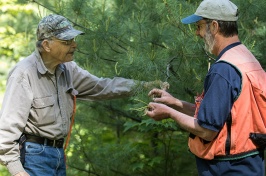
Rape culture. You may have heard the phrase, but few can define what it really means. Until you understand what rape culture is, it’s hard to identify evidence of a rape culture at all. Many even deny we live in a rape culture, blaming “mass hysteria” from feminist bloggers — like me. This feminist blogger is here today to explain what rape culture is, how we live in one and what you can do to combat rape culture. The first step is understanding rape culture and being able to identify it.
Rape culture is defined by the Women’s Center at Marshall University as “an environment in which rape is prevalent and in which sexual violence against women is normalized and excused in the media and popular culture. Rape culture is perpetuated through the use of misogynistic language, the objectification of women’s bodies, and the glamorization of sexual violence, thereby creating a society that disregards women’s rights and safety.”
Rape culture is all around us. It’s the guy down the hall of your first-year residence hall who wore a “gynecologist” Halloween costume. A classmate saying they were “raped” by that exam. The sign outside of a fraternity that says “leave your daughters here.” Saying “she asked for it” because of what someone was wearing or because she was drinking. Louis C.K. being welcomed back into comedy after a short timeout. Robin Thicke’s “Blurred Lines.” It’s the guy in a romantic comedy who stalks his victim until he finally “wins” her attention. It’s a recording of the current president’s past talk of grabbing women by the pussy and doing whatever he wants to them being dismissed as “locker-room talk.” It’s a country debating whether or not a woman’s rape claims against a man about to be confirmed as a Supreme Court judge should be taken seriously. It is a culture of victim-blaming, shaming and rampant injustice within the legal system that prioritizes the future of a rapist above the lifetime trauma of a sexual assault survivor.
Dylan Marron To Visit UNH
In this video, activist, writer and digital media creator Dylan Marron unboxes rape culture.
Marron will be at UNH on Wednesday, Oct. 10, as part of the MUB’s Current Issue Lecture Series.
Let’s look at one recent example of rape culture: the case of Brock Turner, the Stanford rapist. In 2015, Turner, who was a swimmer at Stanford University, sexually assaulted an unconscious woman behind a dumpster at a frat party. The crime was witnessed by two student passersby, who intervened. The woman had no memory of what happened to her.
Dan A. Turner, the perpetrator’s father, argued in a letter that his son should serve only probation time because, “His life will never be the one that he dreamed about and worked so hard to achieve … That is a steep price to pay for 20 minutes of action out of his 20-plus years of life.” Other than Turner’s father’s letter, the judge received dozens of other letters of support for Turner. One written by retired prosecutor Margaret M. Quinn stated, “There is no doubt Brock made a mistake that night — he made a mistake in drinking excessively to the point where he could not fully appreciate that his female acquaintance was so intoxicated. I know Brock did not go to that party intending to hurt, or entice, or overpower anyone.” Quinn called for consequences other than jail time for Turner.
As if sexual assault should be excused as “20 minutes of action” because of how important the life of a perpetrator may be. As if intoxication excuses sexual assault as a “mistake” with no deserved consequence. As if he might not do something like this again. The letter was seen by the judge during the trial, who gave Turner a six-month sentence, rather than the possible 14 years. Turner served only three months in jail when he was able to get out early.

This was a case that, unlike the vast majority of sexual assault cases, had everything it needed: witnesses, evidence, a clear victim and perpetrator. But even then, a rapist was favored in the courtroom and given preferential treatment. Of Turner’s original sentence, a judge worried that a stiffer one would have “severe impact” on the athlete. It is no wonder then that the Rape and Incest National Network (RAINN) estimates that less than one percent of perpetrators see a day in jail, and about two out of three sexual assaults are not reported to police. It is cases like Turner’s that discourage survivors from even coming forward and reporting their assault. This is rape culture. It pressures survivors to be silent.
Rape culture is still depressingly prevalent in our society. But once we can identify it, we can begin to deconstruct it. First and foremost, the most important thing you can do is believe survivors. Call out rape culture when you see it; identify rape culture as something that should not be the norm. Talk to others about rape culture, and don’t let their rape jokes go without identifying them as problematic. Instead, start a conversation. Participate in SHARPP events on campus or at your residence hall, or bring a SHARPP program to your classroom or organization. It’s going to take a while for rape culture — something as American as apple pie — to be totally eradicated. But as more and more survivors come forward with their stories and media attention and public pressure continue to rise, we can get there — one step at a time.
Read more blog entries like this at the SHARPP Edge.
-
Written By:
Jordyn Haime '20 | SHARPP Student Marketing and Communications Assistant



















































